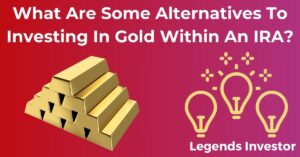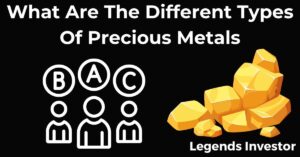Unlocking the Vault: Understanding Precious Metals Investment
Precious metals—gold, silver, platinum, and palladium—have long captivated investors and collectors alike with their intrinsic value and historical significance. As an investment class, precious metals offer unique advantages, but they also come with specific challenges. This comprehensive guide explores the nuances of investing in precious metals, including historical performance, market volatility, liquidity concerns, and more.
Introduction to Precious Metals as an Investment Class
Historical Performance of Precious Metals
Precious metals have been a cornerstone of wealth preservation and trade for centuries. Gold, often referred to as “the ultimate currency,” has served as a store of value since ancient times. Silver, known for its industrial uses and historical significance, also holds a key place in the investment world. Platinum and palladium, while more modern in their economic roles, are valued for their rarity and industrial applications.
Historically, precious metals have demonstrated their resilience during times of economic instability. For instance, gold’s price surged during the 1970s inflation crisis and during the 2008 financial crisis, proving its role as a safe-haven asset.
Comparing Precious Metals to Other Forms of Investments
When comparing precious metals to other investment forms such as stocks, bonds, or real estate, several unique characteristics come into play. Unlike stocks, which can be highly volatile, precious metals often provide a stable store of value. Unlike bonds, which can be affected by interest rate changes, precious metals are less influenced by monetary policy. Real estate, while potentially lucrative, comes with higher maintenance costs and less liquidity compared to precious metals.
Market Volatility: Predicting the Unpredictable
How Precious Metals Markets Can Be Volatile
Despite their reputation for stability, precious metals markets can experience significant volatility. Prices can fluctuate based on a variety of factors including market sentiment, geopolitical events, and economic data. For example, sudden economic uncertainties or changes in monetary policy can lead to sharp price swings.
Factors That Affect Precious Metals Prices
Several factors influence precious metal prices:
- Economic Data: Inflation rates, interest rates, and economic growth data can impact precious metal prices. For instance, higher inflation often boosts demand for gold.
- Geopolitical Events: Political instability, wars, and other geopolitical events can drive investors to precious metals as a safe haven.
- Market Sentiment: Investor behavior and market speculation can cause price fluctuations, sometimes leading to sharp, short-term movements.
The Impact of Economic Downturns on Precious Metal Investments
During economic downturns, precious metals often see increased demand as investors seek to protect their wealth. For example, during the 2008 financial crisis, gold prices reached record highs as investors flocked to it as a safe-haven asset. However, it’s important to note that while precious metals can offer stability, they are not immune to market fluctuations and can experience volatility during economic crises.
Liquidity Concerns: Cashing in Your Assets
Challenges of Liquidating Precious Metals
While precious metals are generally considered liquid assets, the process of selling them can present challenges. The ease of liquidation depends on the form of the metal (e.g., physical bars vs. ETFs) and the current market conditions. Selling large quantities or rare types of precious metals might require finding a specialized buyer or dealer, which can affect the selling price.
The Role of Market Demand in Selling Precious Metals
Market demand plays a crucial role in determining the ease of selling precious metals. High demand can facilitate quicker sales at favorable prices, whereas low demand may lead to longer selling periods and potentially lower prices.
Options for Selling Precious Metals and Associated Costs
Investors can sell precious metals through various channels, including online dealers, local coin shops, and auctions. Each option comes with different fees and processes. Online dealers may offer convenience but might charge higher premiums, while local shops may offer immediate cash but at potentially lower prices.
The Scams and Swindles: Avoiding Precious Metals Fraud
Common Types of Precious Metals Investment Scams
The precious metals market, unfortunately, attracts its share of scams. Common schemes include:
- Phony Gold Coins: Fraudsters may sell counterfeit or falsely described gold coins.
- High-Pressure Sales Tactics: Some scams involve aggressive sales tactics promising high returns or limited-time offers.
- Unregistered Dealers: Investing through unregistered or unverified dealers can lead to fraud.
Red Flags of Fraudulent Investment Offers
Red flags include promises of guaranteed returns, lack of transparency, and high-pressure sales tactics. If an offer seems too good to be true, it likely is. Always verify the credentials of dealers and investment products before proceeding.
Steps to Verify the Legitimacy of Precious Metal Dealers
To avoid scams, ensure that dealers are reputable and registered with relevant authorities. Check for customer reviews, verify their business credentials, and consult with trusted financial advisors.
Storage and Insurance: The Hidden Costs
Costs and Considerations for Storing Physical Precious Metals
Storing physical precious metals involves costs such as safe deposit box fees or vault storage fees. These costs can vary based on the quantity of metals and the security level required. It’s essential to consider these costs when calculating the overall investment returns.
The Importance of Insurance for Precious Metal Investments
Insurance is crucial for protecting against loss or theft. It’s advisable to insure physical precious metals to cover potential risks. Insurance costs should be factored into the overall investment strategy.
How Storage and Insurance Affect Overall Investment Returns
While storage and insurance add to the cost of investing in physical precious metals, they also provide security and peace of mind. These costs should be weighed against the potential benefits and returns of the investment.
Regulatory Risks: Navigating Legal Waters
Government Regulations Affecting Precious Metals
Precious metals are subject to various regulations, including those governing their trading, taxation, and reporting. Regulations can vary by country and impact the legality and taxation of precious metal transactions.
Impact of Changes in Legislation on Precious Metals Investments
Changes in legislation can affect precious metal investments by altering tax rules, import/export regulations, or reporting requirements. Staying informed about regulatory changes is crucial for compliance and optimizing investment strategies.
Importance of Staying Informed About Legal Compliance
Investors should stay updated on legal requirements and changes in legislation to avoid potential issues. Consulting with financial advisors or legal experts can help ensure compliance and informed decision-making.
Economic and Geopolitical Risks: Beyond Your Control
How Economic Shifts Can Affect Precious Metal Prices
Economic shifts, such as changes in inflation rates or economic growth, can influence precious metal prices. Investors should be aware of economic indicators and market trends that can impact their investments.
The Influence of Geopolitical Instability on Precious Metals
Geopolitical events, including conflicts and political unrest, can drive demand for precious metals as safe-haven assets. Understanding geopolitical dynamics can help investors anticipate potential market movements.
Diversification as a Strategy to Mitigate These Risks
Diversification across different asset classes can help mitigate the risks associated with economic and geopolitical uncertainties. Precious metals can play a role in a diversified portfolio, providing stability and protection during volatile periods.
Tax Implications: Keeping the Taxman at Bay
Tax Treatment of Precious Metals Investments
The tax treatment of precious metals can vary based on the type of investment and holding period. Generally, capital gains tax applies to profits from selling precious metals. Understanding tax implications is essential for effective investment planning.
Understanding Capital Gains and Reporting Requirements
Capital gains tax is levied on the profit made from selling precious metals. Reporting requirements can vary, so it’s important to keep detailed records of transactions and consult with tax professionals.
Long-Term vs. Short-Term Holdings and Tax Implications
Long-term holdings of precious metals may benefit from more favorable tax treatment compared to short-term holdings. Understanding the tax implications of your investment horizon can help optimize tax outcomes.
Final Considerations: Weighing the Metallic Portfolio
Balancing Precious Metals Within an Investment Portfolio
Precious metals can offer diversification and protection but should be balanced with other investments. Consider your investment goals, risk tolerance, and portfolio diversification when incorporating precious metals.
Professional Advice for Potential Investors
Consulting with financial advisors or investment professionals can provide valuable insights and help tailor your precious metal investments to your specific needs and objectives.
Long-Term Perspective Versus Short-Term Trade-Offs in Precious Metals Investing
Precious metals investing can be approached from both long-term and short-term perspectives. Long-term investments may benefit from stability and appreciation, while short-term trades might capture market fluctuations. Weighing these approaches against your financial goals is essential for effective investing.
Conclusion
Investing in precious metals offers a range of benefits, including diversification, inflation protection, and stability. However, it also presents challenges such as market volatility, liquidity concerns, and regulatory risks. By understanding these factors and consulting with experts, investors can make informed decisions and integrate precious metals effectively into their investment strategies.



